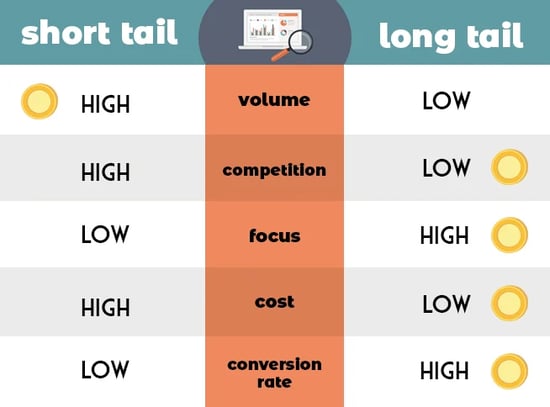
Online business marketing has evolved quite a bit since the inception of the search engine. We’ve entered an era in which online sales are booming and increasing their market share. That’s why it’s more important than ever for brands to focus their attention on eCommerce Search Engine Optimization (SEO).
Unlike other marketing methods, SEO marketing allows you to increase organic search results with unpaid traffic. However, as you’ll find out in this blog, it’s not as simple as we might like. There is an art to SEO marketing that has the potential to push your brand to the forefront.
What is Ecommerce SEO?
As the name implies, ecommerce SEO is a set of SEO best practices geared toward online commerce. Let’s take a deeper dive into what search engine optimization (SEO) is.
In a broad sense, SEO is a method that businesses use to get more traffic to their website. Keywords play an important role in SEO and SEO marketing and when used strategically can boost your organic search traffic and rankings.
SEO and SEO marketing are not exactly the path of least resistance when it comes to generating results. It can take weeks, or more likely months, to see significant improvement in your website’s ranking and importance.
So why do countless businesses flock to SEO specialists if it takes more time than other methods? In short: because it pays off. Here’s why:
Benefits of Ecommerce SEO
If you’ve been researching how to boost the ranking of your website on Google and other search engines, two terms have probably popped up often: SEO and PPC. Pay-per-click (PPC) campaigns place your ad above the top ranked organic search results for any given search query (depending a host of factors). They are fast and effective ways to boost traffic and sales.
Many companies pursue PPC because it can produce the fastest results. Here’s the problem: it’s a sugar high. Any SEO expert will tell you that the benefits of a PPC campaign drop off almost immediately after the campaign is over. This is where SEO outperforms PPC in a big way.
When it comes to ecommerce marketing, SEO is a long-term strategy that will continue to produce results long after you retire your SEO campaign. Additionally, you will pay less for a steady influx of qualified inbound traffic than you would on a competitive PPC campaign.
SEO marketing is the most cost-effective and sustainable method of building your online brand. Structuring your website around SEO is a surefire way to increase organic traffic and, ultimately, boost conversion rates and sales.
Keyword Research
The most important first step in ecommerce SEO is keyword research. The problem with guessing or including the most popular keywords is because you are going up against major, established brands that have cornered the market on the most-used and predictable keywords.
You need to understand exactly what sets your brand apart from its competitors in order to determine what kind of keywords to include in your website. For instance, if you sell women’s clothing, you might focus on more specific aspects of your product, like:
- Where it’s made
- Specific styles of clothing (blouses, dresses, crop-tops, etc.)
- What fabric you use
- etc.
Now you have more specific keywords. So, instead of simply “shirt,” you might have something like “water resistant running shirt.” Because this is a more specific search query, fewer people will search for it. However, the people who do search for it will see your site at the top of the search results. This is an essential aspect of SEO marketing.
It’s important to find the keywords that will put you within the first five pages of search results. After this point there is a 90% reduction in clicks.
 Long-Tail and Short-Tail Keywords—What’s the Difference?
Long-Tail and Short-Tail Keywords—What’s the Difference?
As we mentioned above, there are generic and specific keywords. In SEO, these terms are referred to as “short-tail” and “long-tail,” respectively and their main differences are volume and conversion rate.
In SEO marketing, longer, more specific keywords tend to produce higher conversion rates than shorter, more generic keywords. Why? When you look at the search behavior of average online shoppers, you’ll find that they use longer phrases (4-6 words).
Due to the rarity of these long-tail keywords, you must also focus your attention on short-tail keywords. Utilizing both of these keyword types will ensure that your website has a higher domain authority, whether searchers use generic or specific queries.
How do you strike the perfect balance?
Keyword Volume, Competition, and Search Intent
In order to find a balance between long-tail and short-tail keywords, you have to know which keywords will produce results. That’s where volume and search intent come into play:
- Volume is the actual number of keyword searches that are entered into a search engine. Short-tail keywords tend to have a much higher volume, making them harder to rank for. Long-tail keywords have lower volume, making them easier to rank for, yet they don’t produce as large of a consumer base.
- Search intent defines what customers are actually looking for when they enter a search query. It’s important that your business’s keywords actually align with the search intent of potential customers. Avoid keywords that don’t line up with what you’re actually selling.
Overall, your SEO marketing efforts must focus on finding keywords that have higher volume and lower competition while still maintaining relevance to your business.
 Website Optimization
Website Optimization
So far, you’ve found a set of keywords you’d like to use and you’ve researched which ones will yield the best results. What’s next?
Unfortunately, you can’t simply pop the keywords onto a webpage and call it a day. Your website must flow and be readable to visitors. Let’s discuss some of the ways that you can make content appeal to search engines and visitors alike.
- Avoid Duplicate Content.
Duplicate content on your webpage from other webpages could result in penalties, lower rankings, or both. Produce original content to maximize the benefit of your SEO and SEO marketing efforts.
- Include Keywords on Category Pages.
Category pages with children pages, or even grandchildren pages, allow potential customers to drill down exactly what they’re searching for. These pages are the perfect opportunity to include keywords that boost your SEO while making the web page flow better for visitors.
- Include Keywords on Product Pages.
Creating keyword-rich product pages are perfect for being picked up by search engines while giving customers the final push to buy your product. Blank product pages are red-flags for customers and search engines alike.
- Blogs for Keyword Density
Blogs are a perfect place to provide more information for your customers while implementing the maximum number of keywords possible. Because blogs can vary in length, there’s less chance that you’ll be penalized for “keyword stuffing.”
Putting These Tools to the Test
By now, you have a firm grasp on the basics of SEO marketing and how you can utilize the right keywords in the right places on your website to boost your rankings. From search intent to website optimization, you understand the underlying process that makes SEO such an imperative part of successful ecommerce marketing.
That being said, SEO and SEO marketing is a dense and complex process. This is why hiring SEO specialists like The Creative Momentum is always a good option. We take the time to find the perfect keywords to optimize your unique brand, place them in the best strategic places throughout your website, and will monitor and adapt based on the results.
If you’re ready to see measurable and sustainable increases in web traffic, conversions, and profit, contact The Creative Momentum today!


